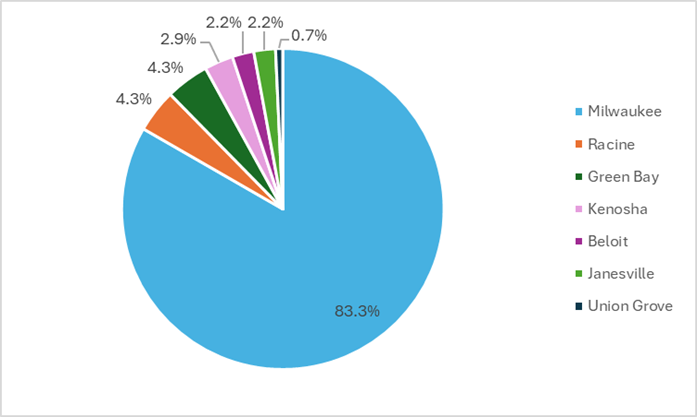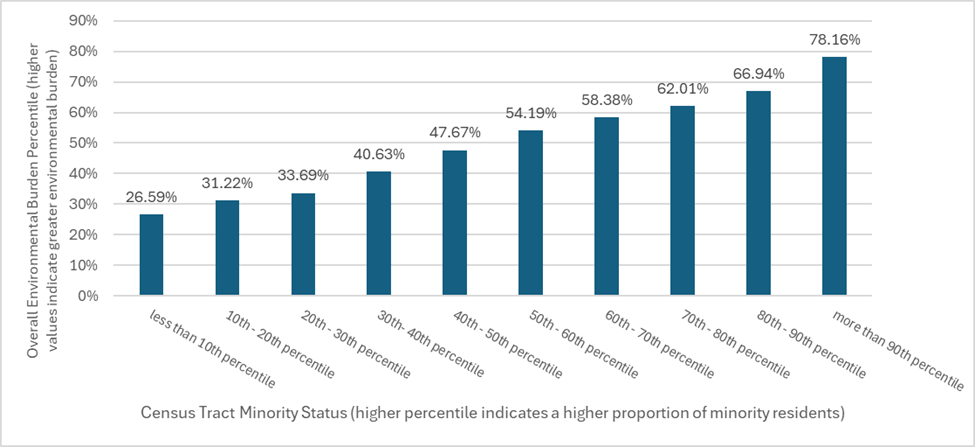By Kayla Rinderknecht, Population Health Service Fellow & Dr. Paul Mathewson, Science Program Director
From the air we breathe to the water we drink, environmental factors directly influence our health. Yet, too often, the connection between a clean environment and public well-being is overlooked. Clean Wisconsin is working on developing an Environmental Health Initiative to better highlight the connection between a clean environment and public health. Clean Wisconsin has brought on Kayla Rinderknecht, a fellow from the UW Population Health Institute, to help lead this effort.
The initiative aims to highlight the environmental determinants of health in Wisconsin, identify priority policies to address the most urgent issues, and direct resources where they are most needed. The initiative also seeks to uncover and address gaps in our current understanding of environmental health across the state. Our target audience includes both the general public and decision-makers.
To do this, we are first working to develop a comprehensive understanding of how pollution and climate change are impacting public health in Wisconsin specifically. One of our starting points is looking at existing environmental burden indices such as the CDC’s Environmental Justice Index (EJI) and the EPA’s Environmental Quality Index (EQI).
Indices such as the EJI and the EQI go beyond a single pollutant and its impact on public health, they incorporate numerous exposure metrics to provide a broader picture of cumulative environmental burden on local residents. This allows public health officials and researchers to locate areas of concern that are most likely to experience poor health outcomes related to environmental burden. Burdens identified through the EQI and EJI have both been associated with adverse health outcomes, including asthma prevalence, cardiovascular diseases and risk factors, adverse pregnancy outcomes, and self-reported health measures. These associations indicate that an increase in EQI and EJI scores (worsening environmental quality and injustice) can increase the chance of worsening health outcomes.
Based on the health outcomes associated with the existing indices, a deeper dive of Wisconsin environmental health indicators was conducted for a high-level screening of greatest environmental burden across the state. Due to dated information utilized in the EQI (some dating back before 2010), we have focused on the EJI, which provides a more recent and accurate representation of the environmental burden in Wisconsin. The EJI’s Environmental Burden Module produces an overall Environmental Burden score based the following subdomains: Air Pollution, Potentially Hazardous and Toxic Sites, Built Environment, Transportation Structure, and Water Pollution. A higher score indicates a higher environmental burden (worse environmental quality).
Of the census tracts with the highest environmental burden (defined as the top 10% most burdened census tracts), the vast majority (91%) were in the southeast region (Milwaukee, Racine, Kenosha, and Union Grove) urban areas. The remainder were found in Beloit, Janesville and Green Bay urban areas.

There were also prominent racial/ethnic disparities related to environmental burden. When looking at the overall Environmental Burden Module by minority status, census tracts with the highest percentage of minority residents experienced substantially higher environmental burden (average of 78th percentile of environmental burden) compared to the census tracts with the lowest percentage of minority residents (average of 26th percentile of environmental burden). Additionally, there is a steady increase in environmental burden as minority status percentiles increases. This indicates that higher-proportioned minority neighborhoods experience worse environmental burden in Wisconsin.

This is a high-level analysis aimed at developing a comprehensive understanding of how pollution and climate change are impacting public health in Wisconsin specifically. The next steps of the initiative will include digging into individual components of these indices to see what types and sources of pollution are causing the most burden on Wisconsin communities, with a focus on those that are most contributing to health inequities in the state. After analyzing these indices in more detail, we hope to identify priority policies aimed at addressing the most pressing environmental determinants of health and direct resources toward the greatest need.

